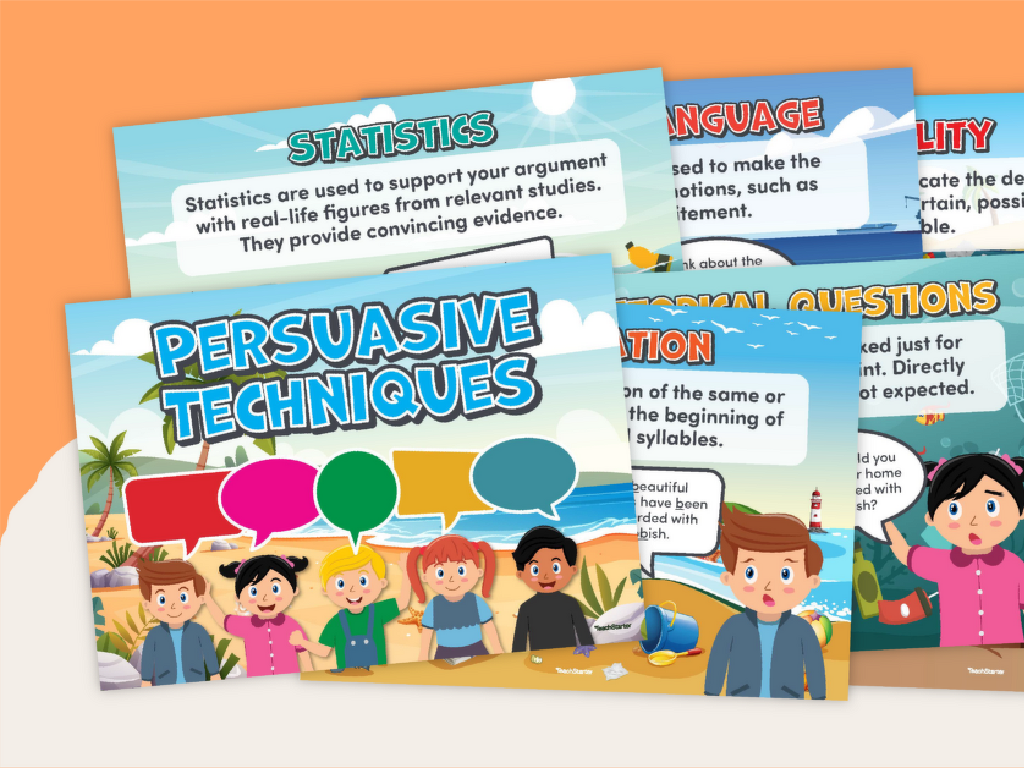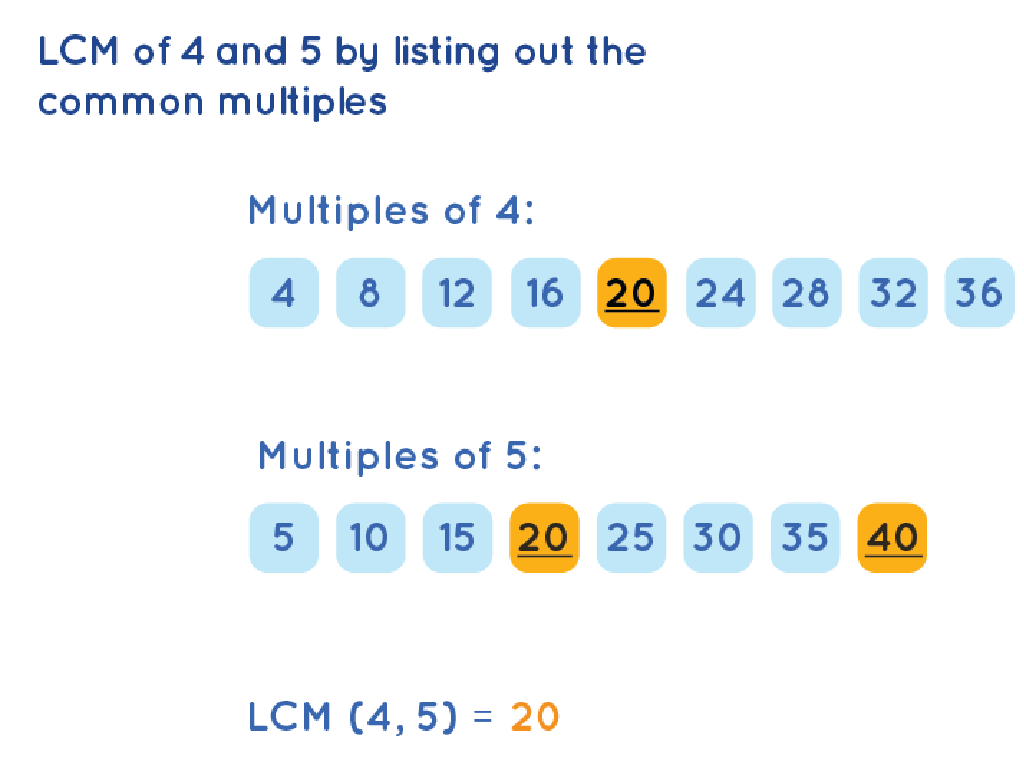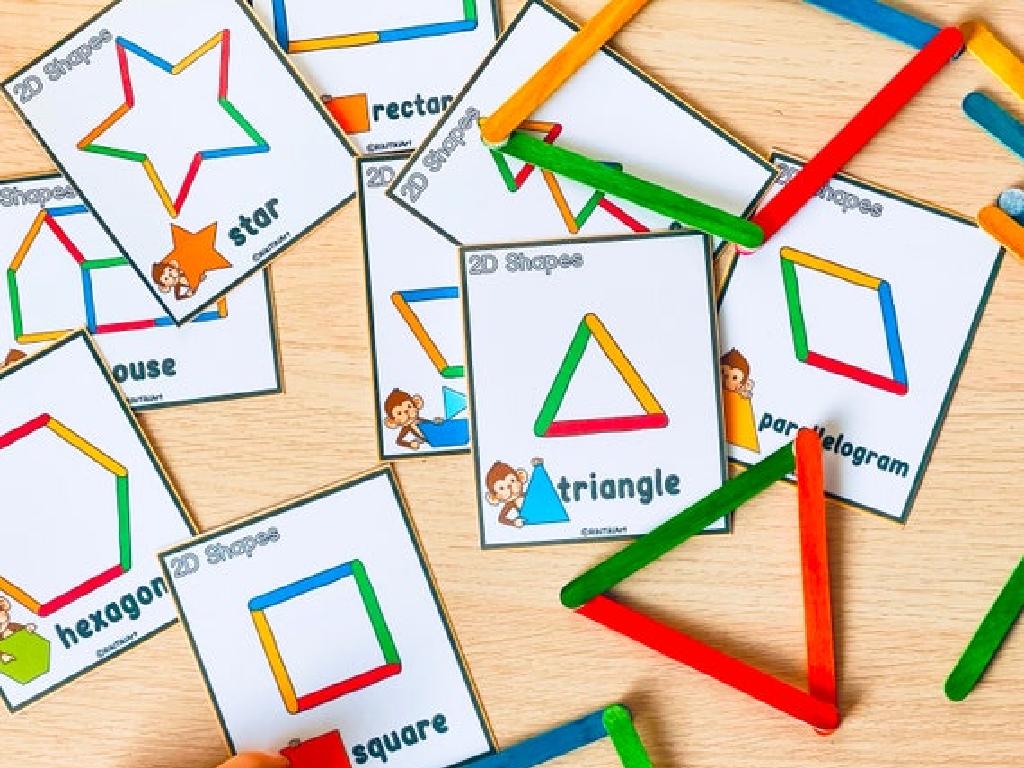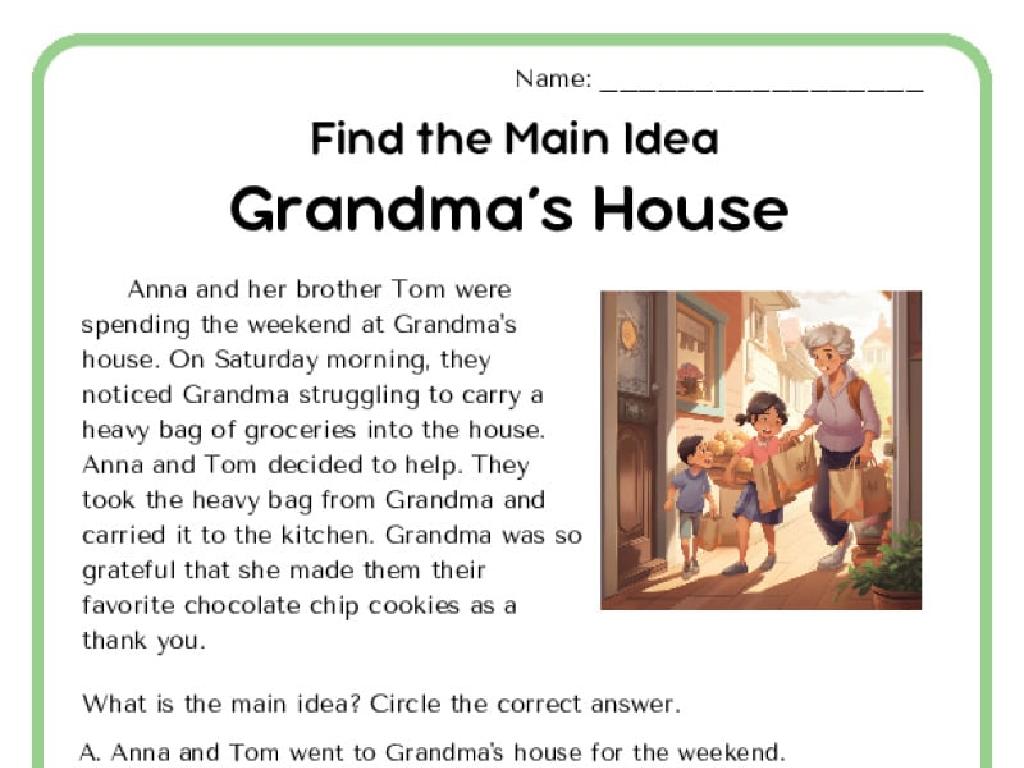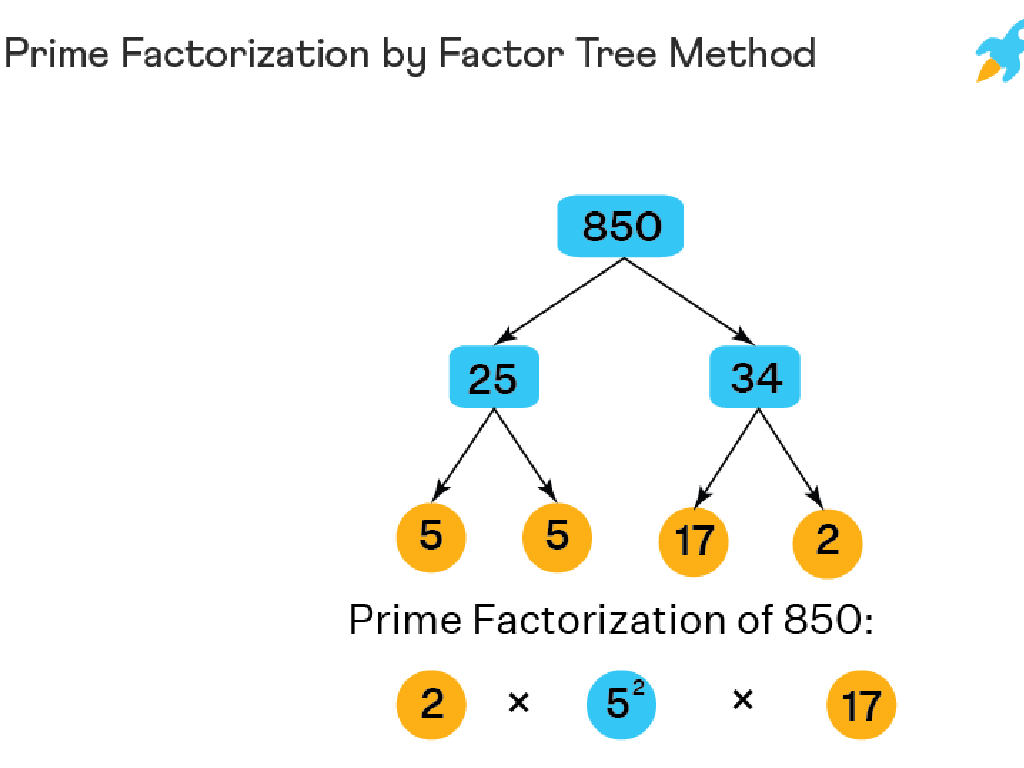Graph Smaller Or Larger Fractions On A Number Line
Subject: Math
Grade: Third grade
Topic: Fractions On Number Lines
Please LOG IN to download the presentation. Access is available to registered users only.
View More Content
Welcome to Fractions on Number Lines!
– Learn about fractions on number lines
– Graphing smaller and larger fractions
– Place fractions correctly by their size
– Why fractions matter in math
– Fractions are key in math concepts and problem-solving
– Fractions in everyday life
– Use fractions when cooking or dividing things equally
|
Today’s lesson introduces fractions and their placement on number lines, which is a visual way to understand the size of different fractions. Students will learn to graph both smaller and larger fractions, recognizing how fractions represent parts of a whole. Understanding fractions is crucial for mathematical development and is a skill used in many real-life situations, such as cooking or dividing items. Encourage students to think of examples where they have used fractions outside of school. This foundational knowledge will support their future math learning.
Understanding Fractions
– A fraction is part of a whole
– Like a slice of pizza is a part of a whole pizza
– Numerator and denominator explained
– Top number (numerator) is the part you have, bottom number (denominator) is the total parts
– Examples: 1/2, 3/4, 2/3
– 1/2 means half, 3/4 means three quarters, 2/3 means two thirds
|
Begin by explaining that a fraction represents a piece of something that is whole. Use tangible examples like slices of pizza or pieces of fruit to illustrate this concept. Clarify that the numerator, the top number, indicates how many parts we have, while the denominator, the bottom number, shows the total number of equal parts the whole is divided into. Provide simple fractions as examples and ensure students understand how to interpret them. This foundational knowledge will be crucial for understanding how to graph fractions on a number line.
Understanding Number Lines with Fractions
– What is a number line?
– A straight line with numbers at equal spaces
– Number lines show order of numbers
– It helps us see which numbers are bigger or smaller
– Comparing numbers using a line
– Place two numbers on the line to see which is greater
– Measuring with number lines
– Find the distance between numbers to measure them
|
This slide introduces the concept of a number line as a foundational tool in understanding mathematics for third graders. A number line is depicted as a straight line with numbers positioned at equal intervals along its length. It serves as a visual aid for students to grasp the concept of order and value of numbers, especially when dealing with fractions. By placing numbers on the line, students can easily compare their sizes and measure the distance between them, which is particularly useful when learning to graph fractions. Encourage students to practice by plotting various numbers and fractions on a number line and comparing their positions.
Placing Fractions on a Number Line
– Fractions fit on number lines
– Divide space into equal parts
– Like cutting a cake into equal slices
– Each part is a fraction
– If we cut it into 4 pieces, each piece is 1/4
– Practice with different fractions
– Try placing 1/2, 1/4, 3/4 on a line
|
This slide introduces the concept of placing fractions on a number line, which helps students visualize the size of different fractions. Explain that just like whole numbers, fractions have a specific place on the number line. To help them understand, compare the number line to dividing a whole object, like a cake, into equal parts. Each slice of the cake represents a fraction of the whole. Encourage students to practice by dividing the space between 0 and 1 into equal parts and placing fractions like 1/2, 1/4, and 3/4 on the number line. This visual representation will aid in their comprehension of fractions as parts of a whole.
Comparing Fractions on a Number Line
– Compare fractions using a number line
– Fractions near 0 are smaller
– For example, 1/4 is closer to 0 than 3/4, so it’s smaller
– Fractions near 1 are larger
– For example, 3/4 is closer to 1 than 1/4, so it’s larger
– Let’s explore examples together
– We’ll compare 1/2 with 1/3 and 3/4 with 2/3 on a line
|
This slide introduces students to the concept of comparing fractions by their position on a number line. Emphasize that the number line is a tool that helps us visualize the size of different fractions. Explain that fractions are not just parts of a whole, but they also have value and can be ordered by size. Use the number line to show that fractions closer to 0 are smaller, and those closer to 1 are larger. Provide clear examples by plotting fractions on the number line and comparing their positions. Encourage students to think about where a fraction would be on a number line before deciding if it’s larger or smaller than another fraction.
Graphing Smaller Fractions on a Number Line
– Smaller fractions explained
– Numerator is less than the denominator, like 1/4 or 2/5
– Where to find them on a line
– They appear to the left of the halfway point on a number line
– Example: Comparing fractions
– 1/4 is closer to 0 than 3/4, showing it’s smaller
|
This slide introduces students to the concept of graphing smaller fractions on a number line. Emphasize that smaller fractions are those where the numerator (the top number) is less than the denominator (the bottom number). These fractions represent amounts less than one whole and are found on the left side of the number line, closer to zero. Use visual examples like 1/4 and 3/4 to show how 1/4 is placed to the left of 3/4, indicating it is the smaller fraction. Encourage students to think of the number line as a visual tool to compare the size of different fractions.
Graphing Larger Fractions on a Number Line
– Larger numerator means larger fraction
– If the top number is bigger than the bottom, it’s a larger fraction
– Larger fractions go to the right
– Just like numbers, bigger fractions are further right on the line
– Example: 3/4 is larger than 1/4
– 3/4 has 3 parts filled, 1/4 only has 1 part filled on the line
|
When teaching third graders to graph larger fractions on a number line, emphasize that fractions with a larger numerator (the top number) compared to the denominator (the bottom number) are considered larger. Use visual aids to show that as we move to the right on the number line, the fractions get larger. Provide clear examples, such as comparing 3/4 and 1/4, to illustrate that 3/4 occupies more of the number line than 1/4, hence it is larger. Encourage students to practice by plotting different fractions on a number line and observing their relative sizes.
Activity Time: Create Your Number Line!
– Draw a straight line with your ruler
– Mark equal intervals on the line
– Place 1/4, 1/2, 3/4 on the line
– Start at 0, find the middle for 1/2, then 1/4 and 3/4
– Understand fractions on a number line
– Seeing fractions visually helps grasp their size
|
This activity is designed to help students understand how to graph fractions on a number line and recognize the relative size of different fractions. Provide each student with a ruler and paper. Guide them to draw a long horizontal line and mark off equal spaces to represent intervals. Then, instruct them to correctly place the fractions 1/4, 1/2, and 3/4 on the number line. Emphasize the importance of spacing the fractions evenly to show their size relative to each other. Possible variations of the activity could include using different sets of fractions, comparing fractions, or even having students create their own fractions to place on the number line.
Class Activity: Fraction Number Line Race
– Pair up for a number line race
– Place fractions correctly on the line
– Use your knowledge of fractions to order them from smallest to largest
– First to finish accurately wins a prize
– Check your work for precision
– Double-check before you say you’re done!
|
This activity is designed to be a fun and interactive way for students to practice placing fractions on a number line. Students will work in pairs to foster teamwork and peer learning. The competitive element of racing adds excitement, but it’s crucial to emphasize the importance of accuracy over speed. Provide clear instructions on how to determine the correct placement of fractions, and remind students to check each other’s work. Possible variations of the activity could include using different sets of fractions, timing the race for added challenge, or having students explain their reasoning for the placement of each fraction to the class after completion.
Conclusion & Review: Graphing Fractions
– Congratulations on learning graphing!
– Fractions represent parts of a whole
– Like slices of pizza or pieces of a pie
– Practice is key to mastery
– Try graphing 1/2, 3/4, or 5/8 on a line
– Keep exploring with various fractions
– How does 1/3 compare to 2/3 on a number line?
|
As we wrap up today’s lesson on graphing fractions on a number line, it’s important to reinforce the concept that fractions are a way to represent parts of a whole, which can be visualized through graphing. Encourage the students to continue practicing with different fractions at home, using real-life examples like slices of pizza or pieces of a pie to relate to the concept. Provide additional worksheets for them to practice graphing fractions like 1/2, 3/4, or 5/8, and challenge them to think about how different fractions compare to each other on a number line, such as 1/3 and 2/3. The goal is to build confidence and understanding through repetition and exploration.

